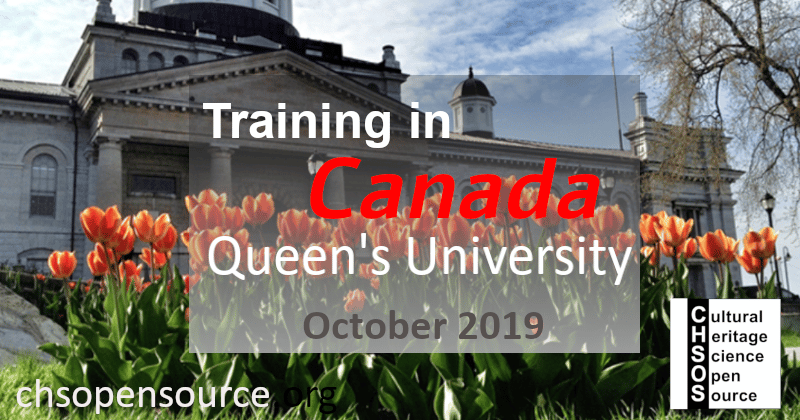
Delivered on October 23-25 2019 a training program and Technical Photography and Multispectral Imaging system for Queen’s University, Canada.

We delivered Training and Equipment to the Department of Art History and Art Conservation at Queen’s. We were happy to visit this important Institution which has been home to many scholars in the fields of arts, architecture, museums, and material studies. This Department offers programs and degrees in Art History (BA) and Art Conservation (MAC).

Queen’s University offers the only Master of Art Conservation program in Canada. Students specialize in the conservation of paintings, artifacts or paper objects or carry out research in conservation science. Students who successfully complete the program are awarded the degree of Master of Art Conservation.

We delivered, installed and tested a Technical Photography kit and a Multispectral Imaging System “Antonello”. Art conservation labs, Libraries, Historical Archives, and paper conservators are more and more interested to apply these diagnostics tools to their collections.


1st Day – Technical Photography
We got a number of items to document which were under study and conservation, one of the most interesting was an Egyptian coffin.
2nd Day – Reflectance Spectroscopy
We presented Gorgias, our Reflectance Spectroscopy System.

3rd day – Multispectral Imaging
We tested our new Antonello system for Multispectral Imaging with 52 mm new filters.

Eventually, we practiced for the last few hours working on items, like this map showing interesting features under UV photography.

Do you need these methods also in your Institution?
CHSOS serves an international audience of institutions and art professionals such as conservators, art historians, art appraisers, fine art photographers, and conservation scientists. Its technical innovations and strategies are being adopted by museums and cultural institutions worldwide. CHSOS disseminates this knowledge through the CHSOS website, publications, and training programs.
- Our Training programs teach practical methods for Art Examination and Documentation. Our modules illustrate imaging and spectroscopy methods regularly used by cultural heritage scientists and conservators for the scientific and forensic investigation of art objects.
- All the training modules have hands-on activities and students practice with our CHSOS equipment. No need for you to bring any equipment.
- No specific educational background is necessary. Our courses are designed for a large audience ranging from art professionals to scientists.
We deliver Equipment and Training at your Institution. See what other professionals did with our service: Training for Institutions
Technical Photography (TP) kit
We offer a complete kit for Technical photography (TP) which includes a full spectrum camera sensitive from the Ultraviolet to the Infrared radiation and the set of necessary filters and lamps. Our TP kit represents a good compromise among quality, adaptability, and costs. It allows to realize a complete set of 8 technical photo documentation methods: VIS (visible photography), UVF (Ultraviolet Fluorescence photography), UVR (Reflected Ultraviolet photography), IR (Infrared photography), IRF (Infrared Fluorescence photography), IRFC (Infrared False Color photography), IRT (Infrared Transmitted photography) and RAK (Raking light photography).
This kit is recommended for art professionals such as conservators, art appraisers, archaeologists, art historians. Use it for a fast and informative examination of easel paintings, wall paintings, manuscripts, and historical documents.
Multispectral Imaging (MSI) system
Conservators and art historians need non-invasive methodologies to identify and map pigments on works of art and archaeology. These tools allow them to select appropriate conservation procedures, acquire information on the workshop practices, distinguish original sections from inpaints and to enhance visualization of faded pigments and inks.
Antonello is our simple MSI system composed of 18 bandpass filters and a digital camera, covering the 400-925 nm spectral range. Using a digital camera rather than a monochromatic scientific dedicated camera has the advantage that the same camera can be used for other technical photographic methods, making the overall imaging equipment lighter, compact and affordable.
We developed Antonello to spread the use of this methodology across Art Conservation professionals and institutions. Antonello, our low-cost MSI system for Art and Archaeology uses specifically designed in-scene gray reference targets and it is versatile and adaptable to the specific needs of different art or archaeology examination projects, such as manuscripts, wall paintings, and easel paintings.
We developed Antonello to be: user-friendly, compact and lightweight, easy to understand, tune-up and upgrade.











